
The long history of the Oscars is studded with awkward moments. In 1973, Marlon Brando sent Native American actress Sacheen Littlefeather to decline his Best Actor Award for The Godfather; John Wayne had to be restrained from assaulting her backstage afterward. In 1989, Rob Lowe performed a bizarre duet with Snow White, surely one of the most embarrassing spectacles ever broadcast live on TV. Then, of course, you have Will “The Slap” Smith rocking Chris Rock’s head with an open palm at this year’s event.
James Cameron’s notorious acceptance speech for Best Director at the 1998 Oscars wasn’t as bad as all that, but it was still pretty cringeworthy. When Warren Beatty read out the nominees, the reaction from the audience was muted. Cameron’s name received the smallest applause, perhaps because after Titanic had steamrollered just about every other category there was a sense that this would be a foregone conclusion.
Sure enough, Cameron’s name came out of the envelope and he collected his award, giving a short speech before holding his prize aloft and shouting: “I’m king of the world!”
He was, of course, quoting Leonardo DiCaprio’s jubilant line in the film, and I think he meant it to be self-effacing. There was a moment of hesitancy before he utters the words, as if he’s wondering, “Am I going to make a tit out of myself here?”
Perhaps a more humble personality might have gotten away with it, but by that stage Cameron had developed a reputation as one of the most demanding and egotistical directors in Hollywood. Pretty much everyone took it at face value, a declaration that Cameron did indeed consider himself mightier than everyone, and it came to epitomise a career of grandiose proportions.
Piranha II: The Spawning (1982)
Even future monarchs of the planet need to start somewhere. After working his way up through production design, model making and special effects, Cameron made his directorial bow on Piranha 2: The Spawning, a thoroughly unnecessary sequel to Joe Dante’s surprise hit.
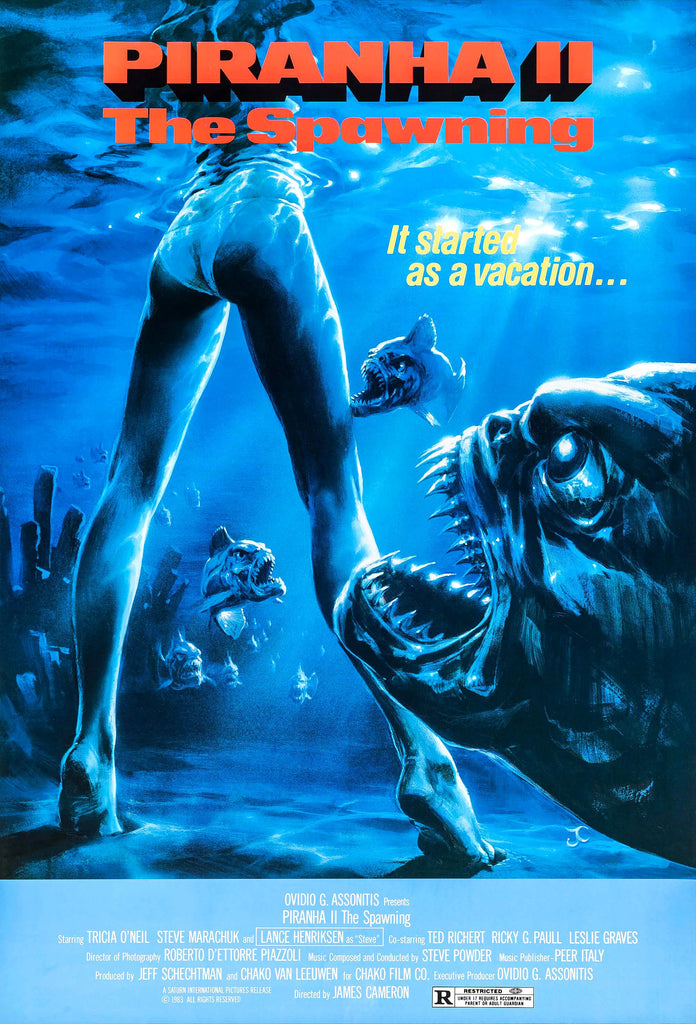
Cameron was originally hired for the VFX for the cheapo cash-in, which cost even less than Dante’s original, before getting promoted to director. That didn’t last long. After some legal wrangling, Ovidio G. Assontis was brought in as Executive Producer, leaving Cameron nominally calling the shots with the B-movie impresario watching over his shoulder.
It wasn’t the most harmonious of shoots and he later claimed that he was fired after two-and-a-half weeks, replaced by Assontis himself. Cameron was broke at the time and sleeping on a friend’s couch, so he wasn’t in the position financially to challenge the decision. He has since said that the film doesn’t feel like his directorial debut.
As far as shoddy cash-in sequels go, Piranha II ranks high up there in terms of utter shoddiness. However, it gave Cameron the chance to do some underwater photography, which would pay dividends in his later films. He also became friends with an actor called Lance Henriksen, who would play a key role as the director established himself in Hollywood.
The Terminator (1984)
The origins of The Terminator is a classic Hollywood mix of serendipity and pure gumption. While attending the premiere of Piranha II, Cameron fell ill and had a fever dream about a menacing steel exoskeleton emerging from a wall of flames, a frightening image that he used as the basis for a screenplay.
Not content to just sell the script, Cameron offered the rights to producer Gale Anne Hurd for one dollar on the condition he could direct the picture. She agreed. To drum up financing, Cameron got his pal Lance Henriksen to bust into a Hollywood executive’s office fully dressed as the Terminator, before the director arrived to carry on the pitch.
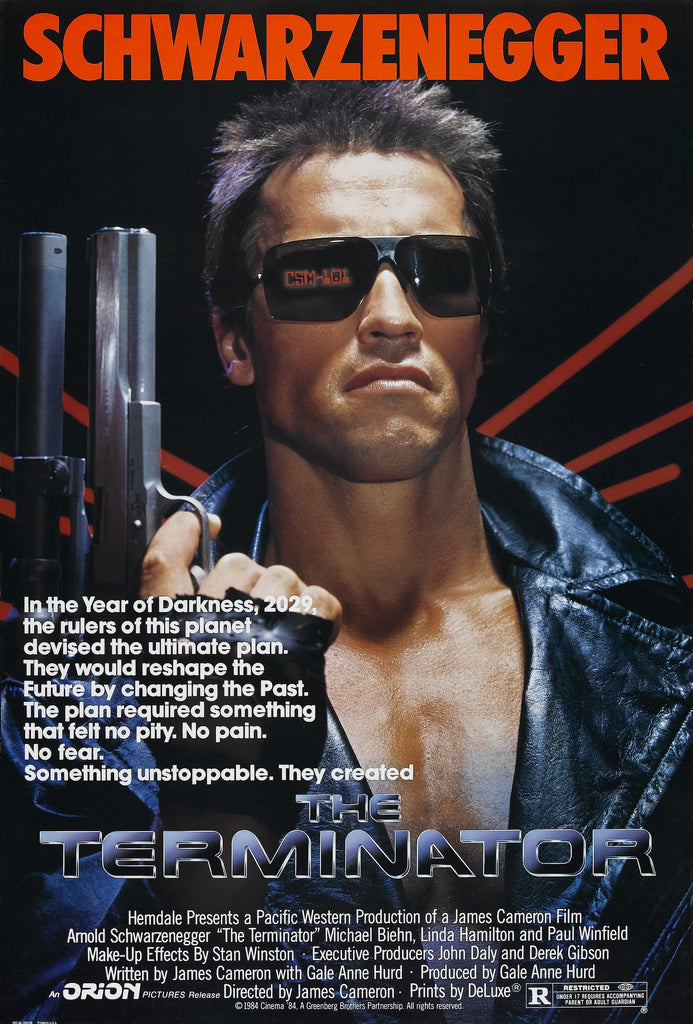
Casting was fraught with the studio originally preferring Mel Gibson, Sylvester Stallone, and even O.J. Simpson for the role of the killer cyborg. Arnold Schwarzenegger was originally earmarked for the heroic role of Reese, the rebel fighter sent back from the future to protect Sarah Connor (Linda Hamilton), a witless waitress who will give birth to a great resistance leader.
Luckily, it all came together and Cameron made the most of his breakthrough opportunity, keeping up a tempo as relentless as the robotic hitman himself. Arnie initially had reservations about starring in the film, but those doubts were unfounded. The role as the monosyllabic killing machine catapulted him to stardom, and the sight of his awesomely jacked assassin stomping around LA in shades and leather was one of the defining images of ‘80s action cinema. There was little doubt that Arnie had a real talent for this kind of material, undercutting his physical prowess with a sly sense of humour and culminating in that now famous catchphrase I shall not repeat here.
The film was a box office smash and threw the doors open to Cameron’s blockbuster career.
Aliens (1986)
“This time it’s war” boomed the tagline for Cameron’s sequel to Ridley Scott’s esteemed sci-fi horror Alien, and it wasn’t kidding. Instead of rehashing the haunted house in space formula of the original, Cameron just went bigger, faster, louder, and more. Pitting a team of space marines against scores of the ferocious Xenomorphs, he also expanded on their life cycle to introduce the spectacularly nightmarish Alien Queen.
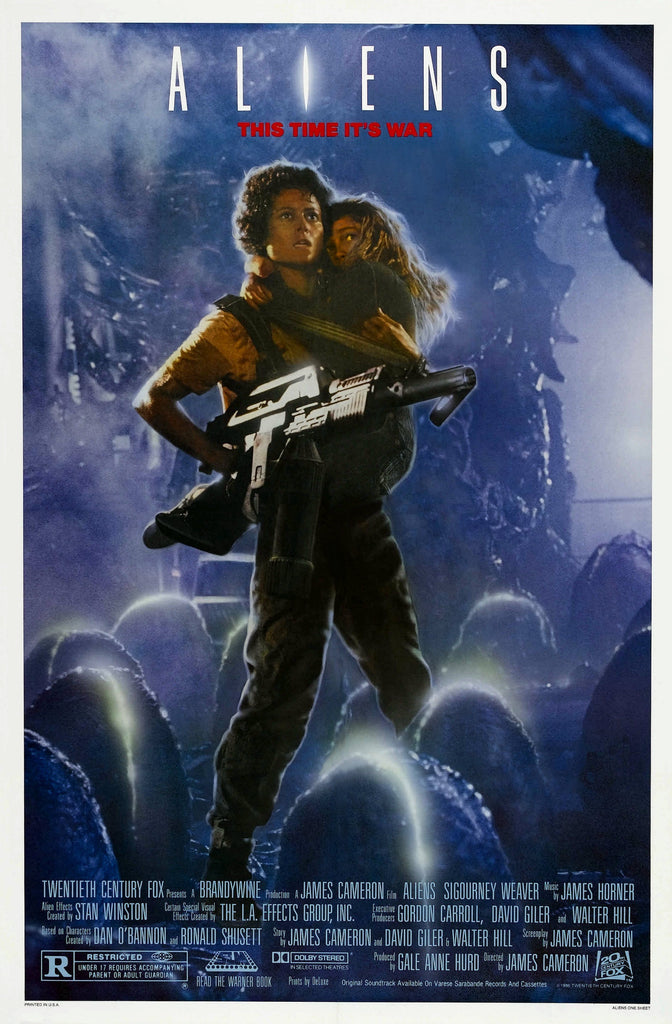
Cameron is sometimes underrated as a screenwriter. He writes so well that his scripts almost read as prose, and he has a knack for unforgettable images and succinct characterisation. Just take Vasquez, played so well by Jenette Goldstein. She only has about seven lines but all the memorable things about the character are all there in the script.
He’s also great at creating a series of escalating events that build logically towards an exhilarating climax. Aliens is perhaps his best example of that. From the moment the grunts set foot on LV-426 to find out what happened to missing colonists, a combination of gung-ho complacency and poor leadership puts them in dire peril as they become the embattled underdogs. That leaves it up to Ellen Ripley (Sigourney Weaver), reluctantly along to advise after 57 years in cryosleep, to pull it out of the bag with her special brand of fierce resolve.
Weaver was initially reluctant to reprise her role from Alien due to what she perceived as a fetishisation of firearms and military hardware in the screenplay. That may be a recurring theme in Cameron’s movies, but the designs of the pulse rifles, personnel carrier, and the power loader are all almost as iconic in the Aliens universe as the Xenomorphs themselves.
Once Weaver was on board, she established Ripley as one of the great characters in science fiction cinema, a genre that often lacks good lead roles for women. Aliens is a scary movie packing plenty of firepower, but the key to its success is the relationship between Ripley and a traumatised young girl, Newt (Carrie Henn), orphaned by the Xeno infestation of her home outpost.
The mother theme is incredibly resonant because we learn that Ripley’s own daughter died as an old lady while she was drifting in deep space, adding extra poignancy as her motherly instincts lead her to protect Newt at all costs. On the flip side, the Alien Queen is just as protective of her offspring, leading to an epic final showdown.
The Abyss (1989)
James Cameron loves the water, and his insistence on dunking his cast and crew in hundreds of gallons of the wet stuff for months on end produced an infamously difficult shoot for The Abyss. Near-drownings and punch-ups added were all part of the bad-tempered production and star Ed Harris vowed he wouldn’t even talk about the movie afterwards.
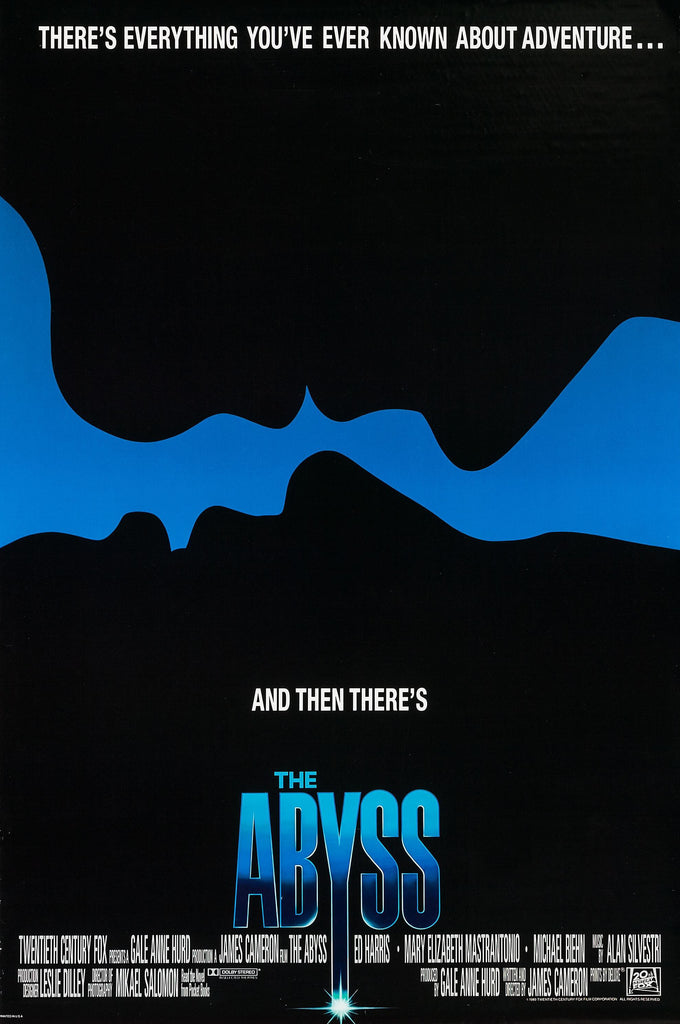
The Abyss is a flawed movie. Harris and Mary Elizabeth Mastrantonio give committed performances but the film lacks a magnetic focal point like Arnie or Weaver and, after a series of nail-biting set pieces, Cameron struggles to find the right tone for the conclusion. This resulted in a Theatrical Cut and a Director's Cut, neither of which wrap up the story in a satisfying manner. The finale, when Harris’s character comes face-to-face with the aliens living in the titular deep dark hole, is underwhelming and lacks the sense of Close Encounters-style wonder that the director was no doubt striving for.
Still, it’s a gripping underwater adventure until we get to that point, and The Abyss is also noteworthy for its part in the CGI revolution. The innovations of ILM wowed audiences with the landmark “water tentacle,” which looks antiquated now but still impresses in how well it is integrated into its scene with the real-life actors.
Terminator 2: Judgement Day (1991)
After expanding on the themes and lore of the budding Alien franchise, Cameron did the same with the world he established in The Terminator. He had a masterful switcheroo planned for audiences; Arnie, reprising his role of the T-800 cyborg, would be fighting for the good guys this time. It was a choice that took Arnie’s superstardom even further into the stratosphere.
Cameron also created an antagonist that could believably cast the hulking Arnie as an outdated but still formidable underdog, a liquid metal assassin that can adopt any form. The liquid metal effects that helped bring the T-1000 to life were ground-breaking, but Robert Patrick’s malevolent performance really sold the thing as a character. He also made it totally believable that he could kick the crap out of Arnie, even though he was only about half the Austrian Oak’s size.
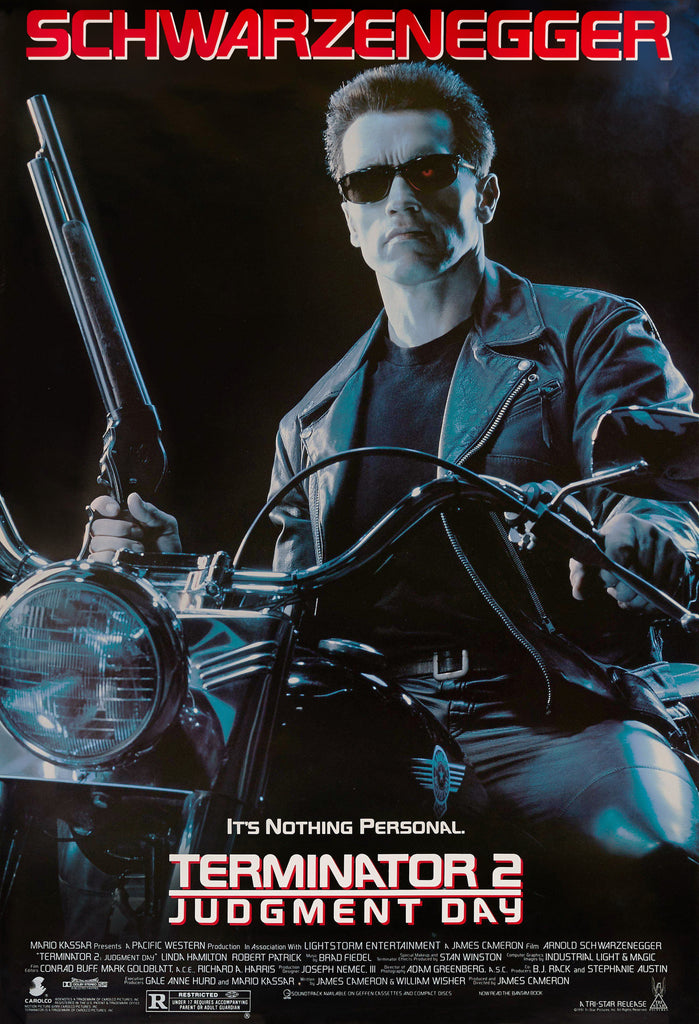
A third key aspect to how well Terminator 2 advanced the story of the original without ever feeling like a re-tread was the development of Sarah Connor from a poodle-permed victim to a haunted prepper with a thousand-yard-stare and totally ripped physique. Even Mr. Universe himself was impressed by how Hamilton managed to build that figure in six months, which also challenged the way women were portrayed on screen at the time.
The stage was all set for a rip-roaring adventure that upped the ante at every turn. Cameron had the good sense to use his CGI toys sparingly, favouring good old-fashioned stunts for some of the most memorable set pieces, like launching a truck off a bridge or flying a helicopter beneath an underpass with zero margin for error. Terminator 2 was the peak of the franchise, and joined Aliens as one of the best sequels ever made.
True Lies (1994)
After establishing himself as one of Hollywood’s greatest action directors, Cameron next tried his hand at a comedy, albeit one that came with a $100 million price tag and just as many explosions as his straight-up action movies.
Schwarzenegger was on board again as Harry Tasker, a super spy leading a double life to keep his crucial counter terrorist activities a secret from his mousy wife Helen (Jamie Lee Curtis). Arnie is pretty much on cruise control in this movie, which is not necessarily a criticism; he’s got the one-liner delivery down pat and all the action beats are fine-tuned to the point that it is almost mechanistic. The film’s secret weapon is Curtis, who is a far more gifted comic actor and adept at playing out a series of farcical situations, as she did so well in A Fish Called Wanda. Bill Paxton also amps up the comedy value with a hilarious cameo as a sleazy car salesman who poses as a spy to seduce Helen.
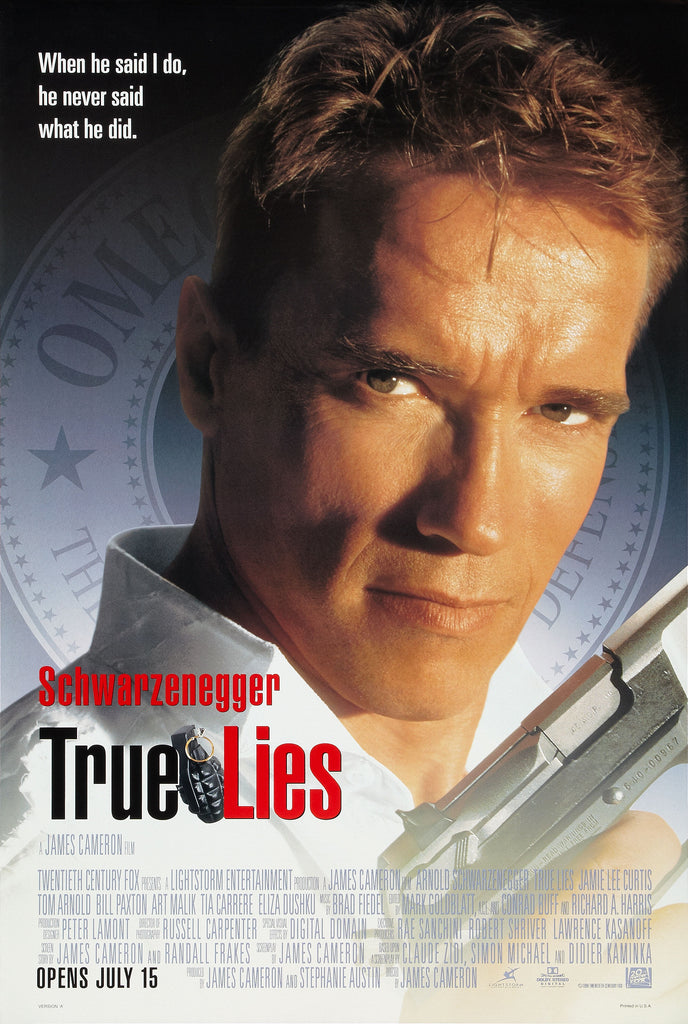
Naturally, Helen finds herself in on the action in a series of increasingly over-the-top set pieces, but Cameron seems unusually short of ideas this time around. He even resorts to borrowing elements of Commando for the finale as Harry’s daughter is held hostage by the generic bad guys. This is where the film really falls down; Art Malik does his psycho-eyed best he isn’t a very memorable foe for Arnie, just another cardboard cut-out Islamic terrorist type who were ten-a-penny in Hollywood before 9/11.
Titanic (1997)
Perhaps only James Cameron would agree to make a movie about the Titanic so long as the studio agreed to finance his trip to explore the actual wreck site. Once he got the green light, however, he not only captured some deep sea footage of the real ship for the film, but he embarked on a project so massive that it is hard to imagine anyone matching it today.
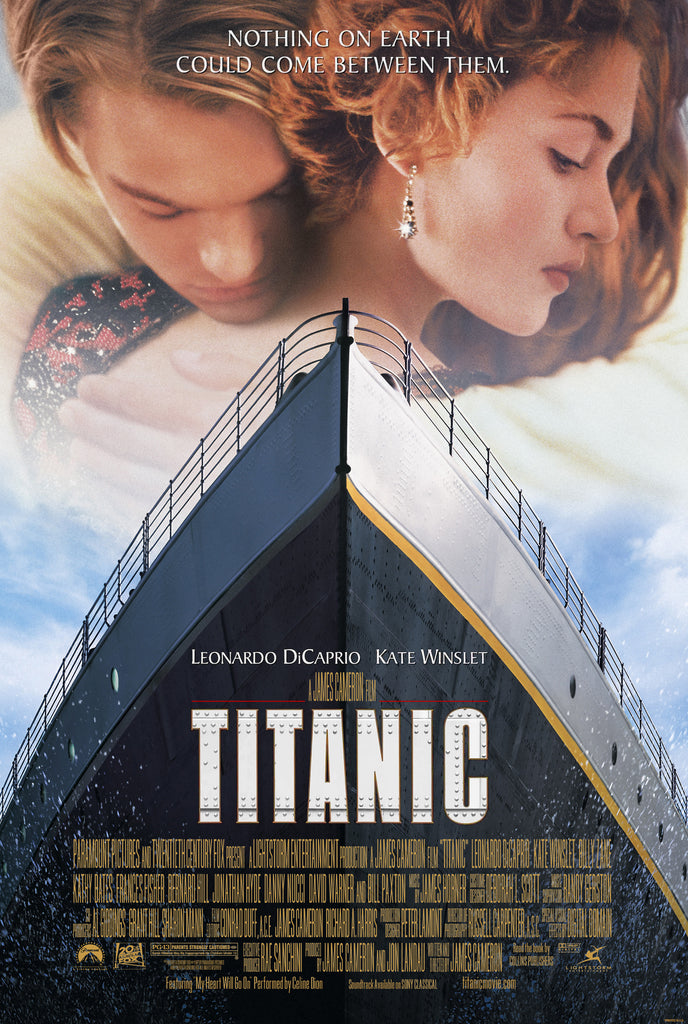
From building a sinkable replica of the ill-fated liner in one of the biggest water tanks ever constructed to sourcing crockery from the same manufacturers who decked out the original ship, Cameron spared no expense recreating the world’s most famous maritime disasters, and his ego and temper grew even more to match the scale of the project. As Christopher Goodwin of The Sunday Times put it:
“He became known as an uncompromising, hard-charging perfectionist and 300-decibel screamer, a modern-day Captain Bligh with a megaphone and walkie-talkie, swooping down into people's faces on a 162ft crane.”
The scale and technological achievement of Titanic would be nothing with its central performances, however. Kate Winslet and Leonardo DiCaprio are simply irresistible as the class-crossed lovers and I’d still argue these are their two best performances. They are both absolutely wonderful, even while wrestling with the film’s notoriously cheesy dialogue.
While the screenplay is packed with absolute groaners, we shouldn’t overlook how effective it is. Their whirlwind romance gives us a tour of the ship, which means that when the iceberg strikes we have a good idea of the Titanic’s geography when the action kicks in.
Cameron and the studio bet the farm on Titanic and, despite overshooting on budget and schedule, were rewarded big time. It was the first film to hit $1 billion at the box office and it has become an immovable fixture of pop culture, with Celine Dion and her sappy power ballad “My Heart Will Go On” also contributing massively. That bloody song was never off the radio at the time.
Winslet’s determined and heartfelt performance earned her an Oscar nomination, but a near-drowning and the incredible stress of working with Cameron made her publicly state she would never work with him again. But now 25 years later she is onboard for the sequel to…
Avatar (2009)
Having conquered the world with Titanic, it would be another 13 years before we saw another feature film from James Cameron. During the interim, he returned to the bottom of the sea to make two 3D documentaries; in Ghosts of the Deep, he went back to explore the Titanic further, and in Aliens of the Deep he captured astonishing footage of the creatures living in such an inhospitable environment.
When he returned to fiction, Cameron launched himself into a project so expensive that it made his previous film look modestly priced in comparison, a $237 million CGI cartoon called Avatar.
![]()
[Adam @ AotM - Those that suffered from Post-Avatar Depression Syndrome after watching Avatar may want to skip to the end of this article. :-) ]
Perhaps he could have allocated a few million of that budget to a script doctor, because his latest technological marvel is hamstrung by a wildly generic plot, feeling like 90 minutes of story dragged out over three hours. The narrative calls to mind Pocahantas and Dances With Wolves with a few of Cameron’s favourite things thrown in: Space grunts, heavy artillery, aliens, and Sigourney Weaver, plus an ecological theme that feels tacked on.
The result is Cameron’s most forgettable film since Piranha II, not helped by the charisma vacuum of Sam Worthington in the lead. It’s really all about the CGI, which tends to date worse than old-school practical effects. 13 years on and the visuals in Avatar are a mixed bag. The flora and fauna of the moon Pandora ranges from breathtakingly beautiful and trippy (the luminescent forest) to looking like something from a Playstation 2 cut scene (those awful hyena things). As for the Na’Vi and the avatars themselves, it is real uncanny valley stuff, especially seeing Weaver’s face grafted onto a nine-foot-tall blue alien.
Avatar went on to make almost $3 billion at the box office, paving the way for Cameron’s long-gestating ambition to direct up to four sequels, beginning with Avatar: The Way of Water. Does anyone actually care that much about an Avatar sequel, let alone a series of five movies in total?
Obviously they are going to make an absolute mountain of money, but I find it really disappointing that after another long break Cameron has decided to invest his time in this franchise rather than explore other ideas. But hey, at 68 years old he might still have another few films in him that aren’t just “Dances With Smurfs.”
So there you have it, my take on the enormous career of James Cameron. What is your favourite movie of his? Are you one of the people who are looking forward to Avatar 2? Let us know!




